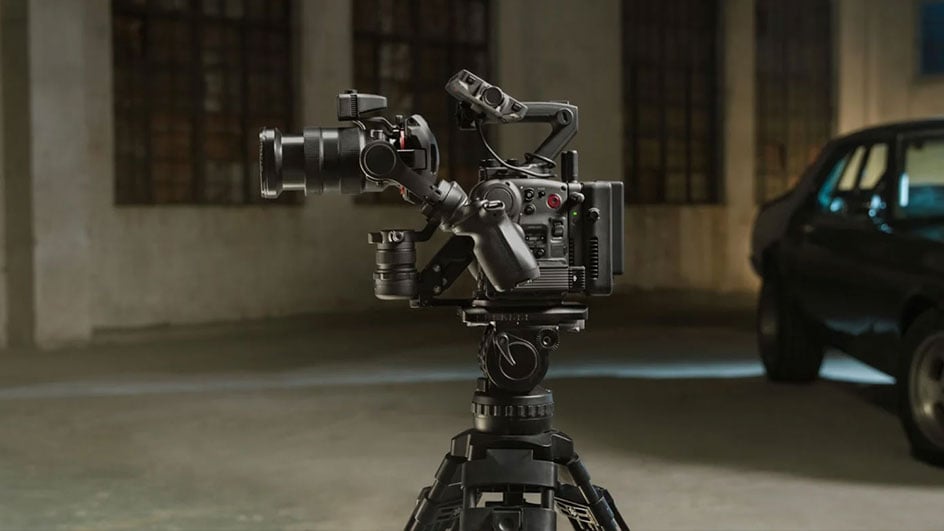Is the DJI Ronin 4D Actually Good for Filmmakers?
Jourdan Aldredge

Nov 2, 2021
In case you missed the news, last month DJI announced their new flagship gimbal/camera system with their new Ronin 4D. (If you need a second to read that “gimbal/camera” part again it’s understandable.)
The DJI Ronin 4D is an all-in-one camera/gimbal solution which promises to finally bridge the divide between digital video cameras and smooth video stabilization. The question is though: Should filmmakers actually care?
Let’s take a look at this new hybrid camera/gimbal concoction and explore if this combination of videography elements are actually helpful to filmmakers, or if these two technologies should just remain in their separate lanes.
Before we dive into whom the DJI Ronin 4D might or might not be right for, let’s go over some of the basic details and specs for this new camera/gimbal. Designed for both amatuer shooters and videography pros alike, the Ronin 4D does represent the best of both video and stabilization worlds.
Its “4D” moniker comes from its built-in Z-axis stabilization which combines with DJI’s standard three-axis gimbal stabilization design, which creates “4-dimensions” of stabilization for unprecedented smoothness.
The Ronin 4D also includes its own X9-6K full-frame camera which is capable of capture rates up to 6K at 60fps in both ProRes HQ and Prores RAW along with offering Ronin’s CineCore 3.0 image processing with ACES workflow support.
Apart, these would both be solid offerings for those looking for gimbal or camera offerings. However, when combined together and with the addition of a plethora of modular monitor, focusing and control components, it certainly starts to become something unique — if not special.
But the question remains: Who is this Ronin 4D actually for?
Let’s start with the positives.
This combination of camera and gimbal systems should truly be a gamechanger for the right audience. Namely, those who work in fast and smooth motion environments where they’ve already basically cemented their favorite digital cameras to their favorite gimbal systems.
And while DJI hasn’t quite made a name for itself yet with its camera technology (outside of its drone camera options), there’s a high chance that many gimbal filmmakers and videographers already use DJI gimbal systems (like their popular Ronin-M or Ronin 2 options).
So when smooth motion often comes down to more stability and less moving parts, the concept of building the camera directly into the gimbal becomes quite intriguing. The Ronin 4D should instantly become one of the most stable options out there for any run-and-gun videographer looking to whip, run, smash or fly their camera across the set.
And with a highly-capable full-frame 6K video camera built-in, you’d be hard pressed to get a better marriage of quality and control on the market today.
Yet, that also might be the eventual downside to this new gimbal/camera system.
Yes, the Ronin 4D is going to beat its competition and look great while doing it today, but at the current rate of technological breakthroughs in the digital camera market, chances are this X9-6K camera is going to be outdated sooner rather than later.
It’s crazy to think but 6K is almost the bare minimum that a new digital video camera can offer these days. With cameras like the Canon R5 and the Sony Alpha 1 already pushing 8K, we might already be in a world where content creators (and clients) might be looking to only book gigs for 8K+ camera systems.
For many, the allure of keeping your cameras and rigs separated just might be too practical. A DJI gimbal should last you several years if not decades, whereas a camera these days might work for that long, but might be outdated in a year or two.
Ultimately, the decision is going to come down to you and your specific needs. Is a gimbal/camera going to move the needle for you and your productions today? And from there, will it tomorrow?
Still, with such solid specs and promising stability, this new hybrid gimbal/camera should be tough for many to ignore.
And taking the novelty out of the equation, its cost is quite competitive and could actually save you some money in the right situations as building out your own camera/gimbal combo from scratch can be quite expensive and time-consuming.
Plus, look at these specs and price and tell me this thing isn’t just a little sexy?
Price: $7,199